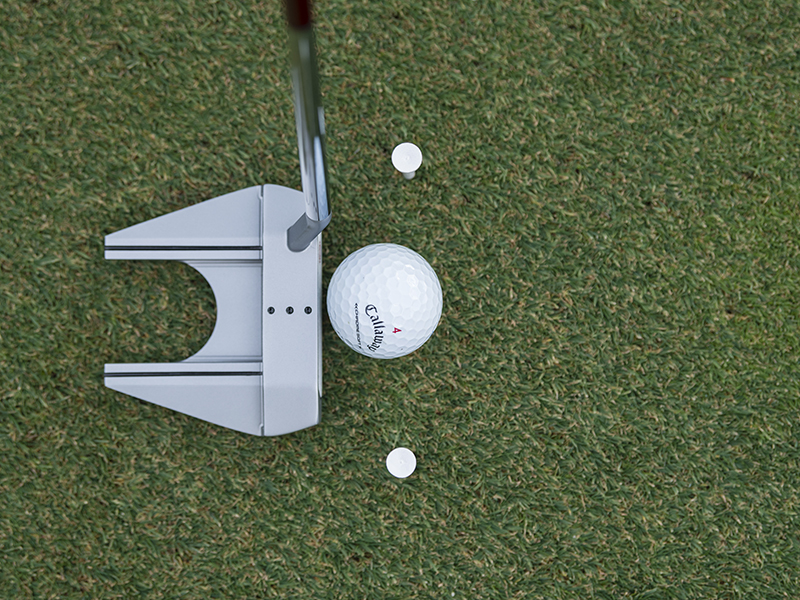6 Things ALL Scratch Golfers Do (That You Don't)
Joel Tadman outlines the six things all scratch golfers do with the help of data from Shot Scope that you can hopefully incorporate into your game


Playing off scratch is often seen as the holy grail. It's a level so many of us aspire to get to, but rarely accomplish. You've probably wondered - what makes a scratch golfer so special? How did they get down to the elusive zero handicap?
Of course a robust technique in all areas plays a part, but much of it comes down to how scratch golfers think about each and every shot. We've had a look at the data from Shot Scope and there are a surprising number of simple ways you can alter your strategy to make it more like how a scratch golfer approaches their round, which we've highlighted below. It might not be as far fetched as you initially thought...
WATCH: We showcase the 6 things all scratch golfers do on the course
1. Know Their Numbers
Scratch golfers have an intimate understanding of how far they hit each club — not just their best shots, but their averages across all conditions. They know how far each club carries as well as total distance, they know how their distances change with draws and fades and they know what the maximum is they can get out of each club
Shot Scope data reveals that scratch players have a 20-yard gap between their total average distance and their performance average (p-avg), which removes mishits and chips out from the trees. By contrast, a 15-handicap golfer has a 27-yard gap, meaning they have less control and more variability in their shot outcomes.
This consistency allows scratch golfers to make more confident club selections and avoid coming up short — a leading cause of missed greens for higher handicaps. Obviously we all want to strike our irons better and that will lead to a tighter gap between our average and our performance average, but knowing how far you hit the ball on average, regardless of your ability level, is important because you can create a plan that takes trouble out of play.
2. Pick Smart Targets Into Greens
Knowing your numbers feeds into smarter target selection. Scratch golfers don't chase every pin — they calculate where the ball is likely to finish, not just where they want it to go. Scratch golfers hit 7 more greens per round than the average 15 hcp (10.6 vs 3.6). They do this in three ways...
Subscribe to the Golf Monthly newsletter to stay up to date with all the latest tour news, equipment news, reviews, head-to-heads and buyer’s guides from our team of experienced experts.
Firstly, they focus mostly on the cover number - which is the distance they need to carry the ball in order to avoid all the major trouble - bunkers, thick rough, penalty areas. They veer away from tucked flags and aim for safer zones to reduce short-siding and increase margin for error - which is a major contributor to double bogeys for higher handicaps. Finally, they try and leave themselves an uphill putt where possible.
Even with elite ball striking, they’re playing the percentages because they know they don’t hit perfect shots very often. This approach contributes to a higher greens-in-regulation rate and having to make fewer short-game saves under pressure. We all want to play stress free golf and hopefully this advice will get you closer.

3. Avoid Blow Up Holes
Scratch golfers average just 0.3 double bogeys per round, compared to 4.7 for a 15 handicap — a key difference in scoring. Interestingly, the fairway hit percentage is similar: 50% for scratch vs 47% for a 15 handicap so the real gap appears when you look at the quality of misses.
Shot Scope data shows 15 handicaps average 5.7 tee shots per round that end in serious trouble — bunkers, hazards, or in the trees — while scratch golfers average just 2.1. That’s almost four fewer recovery situations per round, reducing the need for hero shots and helping avoid blow-up holes.
Scratch golfers manage their misses better, keeping the ball in play and the round under control. But when they do get into trouble, they don’t compound errors, they take their medicine and get the ball back in play.
4. Limit Three putts
Three-putts are silent scorecard killers, especially for mid-to-high handicappers. Golfers with handicaps over 20 average 5.6 three-putts per round, often due to poor lag putting and misjudged pace on longer putts. Scratch golfers, by comparison, average 1.5 or fewer, showing strong distance control and green-reading skills.
That’s potentially 4+ strokes saved per round just by improving pace putting. This isn’t about holing more putts from short and mid range (although that would certainly help!) it’s about avoiding that extra one.
Some advice would be to really focus on the final third of a long putt when reading greens. When the ball is slowing down it will be affected more by the slopes on the green. Getting a better quality of strike on putts will also improve distance consistency, which is why you'll often see scratch golfers and tour pros practicing the tee peg drill with two tees just outside the width of the putter.

5. Pitch It Close (Or At Least On The Green)
Scratch golfers treat every shot inside 70 yards as a scoring opportunity — and it shows. They rarely need more than one shot to get on the green. Shot Scope data shows golfers with handicaps above 20 average 5.6 holes per round where they require multiple shots inside 70 yards to reach the green.Scratch players? Just 1.6.
That’s over four strokes a round saved simply through better contact, distance control, and smarter shot selection on what should be one of the more easier shots in the game. And not only do they find the green, they often leave themselves makeable putts.
Don’t neglect the pitch shot in your practice - try and practice on grass where you can because hitting off mats really doesn’t provide a true picture of strike. Choose a club you’re most comfortable with and devise a system to control the energy into the club, typically this would be some reference points to alter backswing length - like your hips, chest and shoulders.
6. Lean into their strengths
Scratch golfers don’t try to hit every shot in the book — they lean into their strengths. Whether that is knowing their shot shape tendencies, a favorite approach yardage, or trusted club off the tee, they build their strategy around what they do well and only try and hit the shot they know they are capable of pulling off most of the time.
This awareness helps them eliminate one side of the course, choose smarter lines, and play with greater confidence. They’re not mistake-free — they just make fewer bad decisions, because every shot is intentional.

Joel has worked in the golf industry for over 15 years covering both instruction and more recently equipment. He now oversees all equipment and video content at Golf Monthly, managing a team of talented and passionate writers and presenters in delivering the most thorough and accurate reviews, buying advice, comparisons and deals to help the reader or viewer find exactly what they are looking for.
One of his career highlights came when covering the 2012 Masters he got to play the sacred Augusta National course on the Monday after the tournament concluded, shooting a respectable 86 with just one par and four birdies. To date, his best ever round of golf is a 5-under 67 back in 2011. He currently plays his golf at Burghley Park Golf Club in Stamford, Lincs, with a handicap index of 3.1.
Joel's current What's In The Bag?
Driver: Titleist GT3, 9°, Fujikura Ventus Black 6 S shaft.
Fairway wood: Titleist TSR3, 15°
Hybrid: Titleist TSi2, 18°
Irons: Titleist T150, 4-PW
Wedges: Titleist Vokey SM10, 50°, 54° and 58°
Putter: LAB Golf DF3
Ball: 2025 Titleist Pro V1x
You must confirm your public display name before commenting
Please logout and then login again, you will then be prompted to enter your display name.